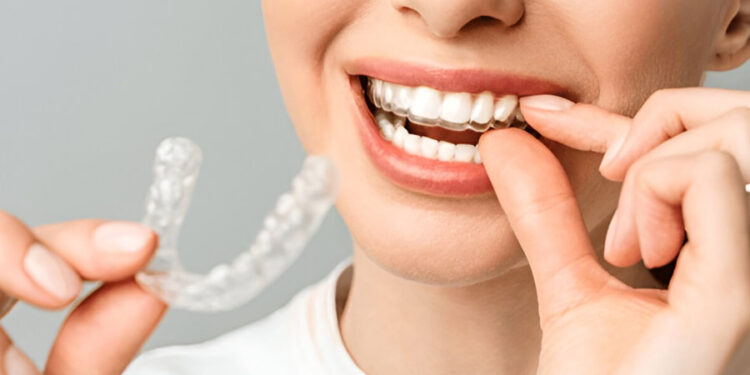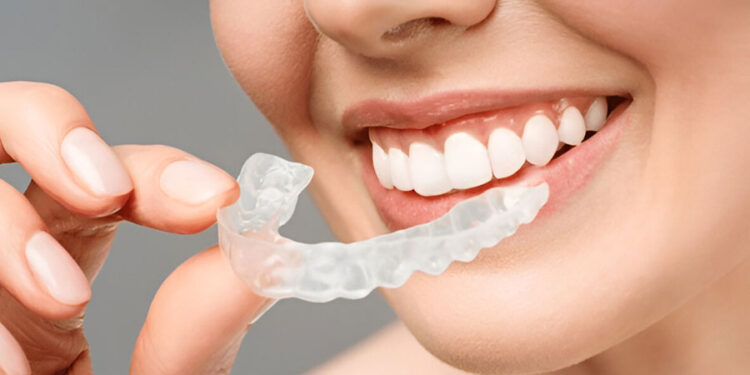Invisible aligners are a fantastic way to straighten your teeth discreetly, but maintaining them properly is crucial for a successful treatment and a healthy smile. This guide will walk you through the essential steps to keep your aligners clean, clear, and in optimal condition.
1. Daily Cleaning is Non-Negotiable:
Just like your teeth, your aligners collect bacteria and plaque throughout the day. Daily cleaning is essential to prevent odors, discoloration, and potential oral health issues.
- Rinse After Every Removal: Immediately rinse your aligners with cool water after removing them. This helps remove saliva and food particles.
- Gentle Brushing: Use a soft-bristled toothbrush and mild, clear soap (like fragrance-free dish soap) to gently brush your aligners. Avoid toothpaste, as it can be abrasive and scratch the plastic.
- Never Use Hot Water: Hot water can warp the plastic, affecting the fit and effectiveness of your aligners.
- Avoid Harsh Chemicals: Do not use bleach, mouthwash (unless specifically recommended by your orthodontist), or other harsh chemicals, as they can damage the aligners.
2. Soaking for Deeper Cleaning:
In addition to daily brushing, occasional soaking can help remove stubborn buildup and keep your aligners sparkling.
- Orthodontic Aligner Cleaners: Your orthodontist may recommend specific aligner cleaning solutions. Follow their instructions carefully.
- Denture Cleaning Tablets: Some people find denture cleaning tablets effective, but always check with your orthodontist first. Dissolve the tablet in cool water and soak your aligners for the recommended time.
- Vinegar or Hydrogen Peroxide Soak (Use with Caution): A diluted solution of white vinegar (1:1 with water) or 3% hydrogen peroxide (also diluted) can help remove stubborn stains. However, these solutions can be harsh, so use them sparingly and rinse thoroughly. Consult your orthodontist before using these solutions.
3. Maintaining Optimal Oral Hygiene:
Your aligners won’t stay clean if your teeth aren’t clean.
- Brush and Floss After Every Meal: Brush and floss thoroughly before reinserting your aligners. This prevents food particles from getting trapped between your teeth and the aligners.
- Carry a Travel Toothbrush: If you’re on the go, carry a travel toothbrush and toothpaste to maintain your oral hygiene.
- Mouthwash (Use with Caution): If you use mouthwash, ensure it’s alcohol-free and won’t stain your aligners. Consult your orthodontist for recommendations.
4. Proper Storage is Key:
When you’re not wearing your aligners, store them in their case to prevent damage or loss.
- Use Your Aligner Case: Always store your aligners in their designated case when not in use.
- Keep Away from Heat: Avoid leaving your aligners in hot environments, such as a car on a sunny day, as this can warp them.
- Keep Away from Pets: Pets can mistake your aligners for toys, so keep them out of reach.
5. Handling Discoloration:
Despite your best efforts, aligners may become discolored over time.
- Minimize Staining Foods and Drinks: Avoid staining foods and drinks like coffee, tea, red wine, and dark sauces while wearing your aligners.
- Clean Immediately After Consumption: If you do consume staining substances, remove and clean your aligners immediately.
- Consult Your Orthodontist: If you notice significant discoloration, consult your orthodontist for advice.
6. Regular Check-ups:
Regular check-ups with your orthodontist are essential for monitoring your progress and ensuring your aligners are functioning correctly.
- Follow Your Orthodontist’s Schedule: Attend all scheduled appointments.
- Report Any Issues: If you experience any discomfort or damage to your aligners, contact your orthodontist immediately.
By following these guidelines, you can maintain your invisible aligners effectively, ensuring a comfortable and successful treatment journey. A clean and well-maintained aligner will help you achieve the sparkling, straight smile you desire.



